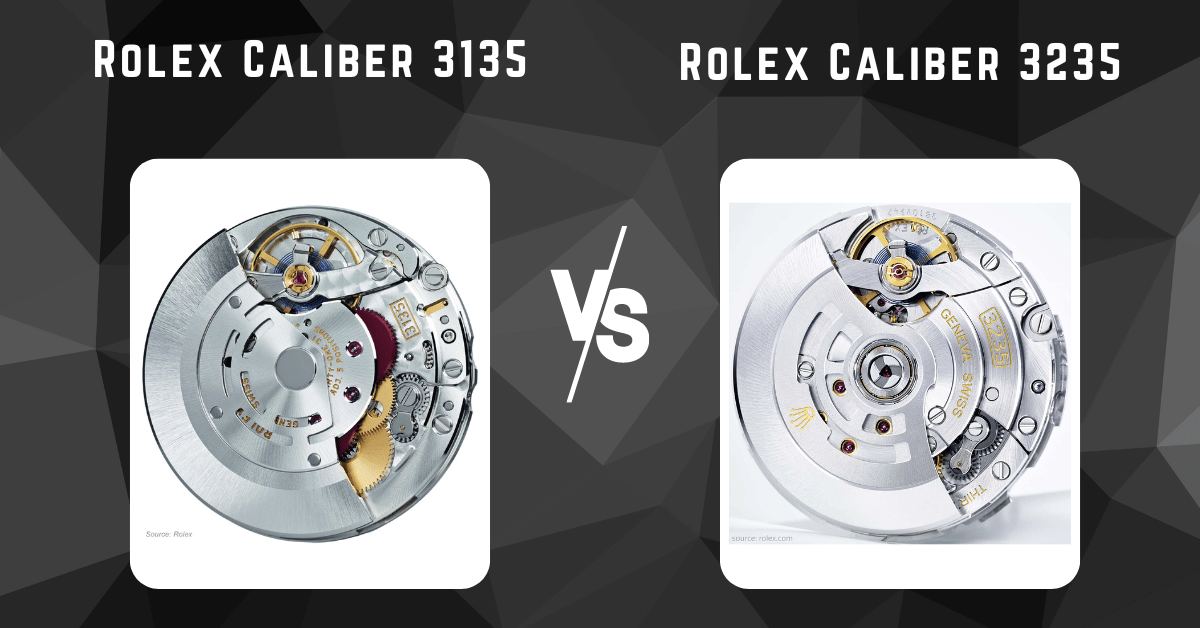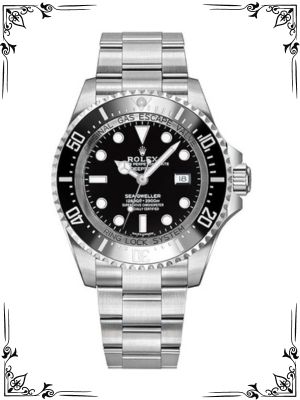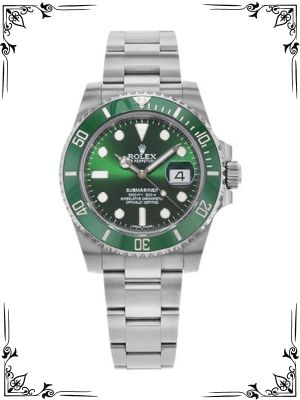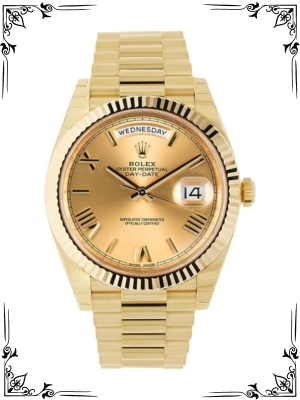Rolex, synonymous with luxury and reliability, equips its timepieces with movements renowned for their precision and durability. Two such iconic calibers are the Rolex 3135 and 3235, powering a vast array of their popular models.
While both movements share the core functionality of automatic timekeeping, subtle distinctions exist, influencing the choice of watch enthusiasts. This comprehensive guide delves into the intricacies of the Caliber 3135 and 3235, empowering you to make an informed decision when considering a Rolex timepiece.
A Legacy of Innovation: A Brief History of Rolex Movements
Rolex has a rich history of in-house movement development, prioritizing precision and reliability. The journey began in the early 20th century with the Rolex Perpetual movement, known for its robust design. The introduction of the Caliber 1030 in the 1950s marked a significant leap, featuring a chronometer-certified automatic movement.
The Caliber 3135, introduced in 1988, became a cornerstone, powering numerous successful Rolex models for over three decades. In 2015, Rolex unveiled the Caliber 3235, touted as the next generation of their self-winding movements.
Unveiling the Core: Functionality and Specifications
Both the Caliber 3135 and 3235 are self-winding, mechanical movements, meaning they rely on the wearer’s natural movements to automatically wind the mainspring, eliminating the need for batteries. Here’s a breakdown of their shared functionalities and technical specifications:
Functionalities:
- Automatic Winding: The movement automatically winds the mainspring as the wearer moves their wrist.
- Three-Hand Timekeeping: Both calibers display hours, minutes, and seconds with central hands. Some variations might offer additional features like a date window.
- Hacking Seconds: The second hand can be stopped for a precise time setting when pulling out the crown.
- Hand-Winding: Both movements can be hand-wound to provide additional power reserve if not worn for an extended period.
Specifications:
- Movement Type: Automatic (self-winding) with manual winding capability
- Jewels: The number of jewels can vary slightly depending on the specific model, typically ranging from 27 to 31
- Vibrations per Hour (vph): 28,800 (4 beats per second) for the Caliber 3135 and 32,000 (5 beats per second) for the Caliber 3235
- Power Reserve: Approximately 48 hours for the Caliber 3135 and 70 hours for the Caliber 3235 (after a full wind)
These shared functionalities ensure both calibers offer reliable timekeeping for everyday wear. The extended power reserve of the Caliber 3235 provides an additional 22 hours of functionality, which might be beneficial for those who don’t wear their watch daily. The increased vph of the Caliber 3235 potentially translates to smoother sweeping seconds of hand movement.
Beyond the Basics: Exploring the Differences
While the core functionalities remain similar, a few key differences exist between the Caliber 3135 and 3235:
Evolutionary Upgrade:
Caliber 3135: Introduced in 1988, the Caliber 3135 established itself as a highly reliable and robust automatic movement, powering a vast range of successful Rolex models.
Caliber 3235: Unveiled in 2015, the Caliber 3235 represents the next generation of Rolex’s self-winding movements. It incorporates advancements aimed at enhancing performance and longevity.
Power Reserve:
Caliber 3135: Offers a respectable 48-hour power reserve after a full wind, ensuring the watch continues to function for nearly two days when not worn.
Caliber 3235: Boasts an extended 70-hour power reserve, providing an additional 22 hours of functionality compared to the Caliber 3135. This can be particularly beneficial for wearers who don’t wear their watch daily or remove it for extended periods.
Movement Efficiency:
- Caliber 3135: The Caliber 3135 utilizes a proven and reliable design. However, its efficiency might be slightly lower compared to the newer Caliber 3235.
- Caliber 3235: Incorporates advancements like a redesigned escapement and a thinner mainspring barrel, potentially leading to improved efficiency in energy usage. This could translate to a more consistent power reserve over time.
Anti-Magnetism:
- Caliber 3135: Offers good anti-magnetic resistance due to the use of a soft iron inner shell. However, it might not be as effective as the newer Caliber 3235 in high-magnetic environments.
- Caliber 3235: Features a revamped escapement made from a Nickel-Phosphorous (Niphos) alloy, which is virtually immune to magnetism. This significantly enhances the movement’s resistance to magnetic fields, ensuring accurate timekeeping even in environments with strong magnetic influences.
Accuracy:
- Caliber 3135: Renowned for its excellent accuracy, typically deviating by +/- 2 to 4 seconds per day when COSC-certified (COSC certification is an independent Swiss standard for accuracy).
- Caliber 3235: This aims to maintain the exceptional accuracy of the Caliber 3135 while potentially offering slight improvements due to its advancements. However, real-world accuracy differences between the two calibers might be negligible for most users.
Regulation: Both calibers can be fine-tuned for improved accuracy if needed. The availability and cost of professional regulation services might vary depending on the specific Rolex model you choose.
A Matter of Choice: Selecting Your Rolex Caliber
The choice between the Caliber 3135 and 3235 boils down to your specific needs and preferences. Here’s a quick guide to help you decide:
Caliber 3135: A perfect choice if you prioritize a well-established and highly reliable movement with a proven track record. You might find a wider range of Rolex models equipped with the Caliber 3135, potentially offering more options to fit your style and budget. The 48-hour power reserve is sufficient for most everyday wearers.
Caliber 3235: Ideal if you value the latest advancements in Rolex technology, including the extended 70-hour power reserve, enhanced anti-magnetism, and potential improvements in efficiency. You might encounter a slight premium for Rolex models equipped with the Caliber 3235 due to its newer technology.
Remember: Regardless of the caliber, all Rolex watches undergo rigorous testing to ensure exceptional performance and durability.
Rolex Caliber Showdown: 3135 vs. 3235
Rolex Caliber 3135
Submariner Date: This legendary dive watch is a cornerstone of the Rolex brand. The 3135 powered the Submariner Date for many years, contributing to its reputation for robustness and reliability.
Datejust: This timeless classic is synonymous with Rolex elegance. The 3135 was a mainstay in the Datejust lineup for decades, offering a blend of functionality and sophistication.
Explorer I: This iconic explorer’s watch known for its simplicity and functionality relied on the 3135 for its dependable timekeeping.
Rolex Caliber 3235
Datejust 41: A modern evolution of the classic Datejust, the 41mm version features the upgraded 3235 movement. It offers a longer power reserve and potentially improved efficiency compared to the 3135.
Sea-Dweller: This professional diving watch is known for its extreme depth capabilities. The 3235 now powers the Sea-Dweller, potentially offering enhanced performance and reliability.
Yacht-Master 40: This sporty and versatile watch aimed at sailing enthusiasts utilizes the 3235 movement. It provides the watch with a longer power reserve and potentially improved chronometer performance.
Beyond the Calibers: Additional Considerations
While the movement plays a crucial role, other factors contribute to the overall value proposition of a Rolex timepiece:
Model: The specific Rolex model you choose will significantly influence the aesthetics, functionality, and price. Explore the vast Rolex catalog to find a watch that resonates with your style and needs.
Material: Rolex offers its watches in various materials like stainless steel, precious metals, and combinations. Consider the material that best suits your lifestyle and budget.
Condition: Are you looking for a brand-new Rolex or a pre-owned one? Pre-owned Rolex models equipped with the Caliber 3135 can be a great option, offering excellent value and a chance to own a piece of Rolex history.
The Final Verdict: Choosing Your Rolex Champion
Ultimately, the choice between a Rolex with a Caliber 3135 or 3235 depends on your priorities. Here’s a final recap:
Prioritize a well-established and reliable movement with a wider range of options. Choose a Rolex with the Caliber 3135.
Value the latest advancements in technology, extended power reserve, and enhanced anti-magnetism. Opt for a Rolex with the Caliber 3235.
Regardless of your choice, a Rolex watch is an investment that embodies luxury, precision, and timeless style. By considering all the factors and aligning them with your preferences, you’ll be well-positioned to acquire a Rolex that reflects your individuality and complements your lifestyle.
Beyond the technical specifications, a Rolex watch transcends mere timekeeping – it becomes a cherished companion on your journey. The weight of history and prestige sits comfortably on your wrist, a constant reminder of the pursuit of excellence.
So, embark on your Rolex quest, informed and empowered. The perfect timepiece awaits a symbol of your success and a testament to enduring quality.
Conclusion: Unveiling Your Ideal Rolex
Understanding the intricacies of the Rolex Caliber 3135 and 3235 empowers you to make an informed decision when embarking on your Rolex journey. Remember, the “perfect” Rolex is a subjective choice. Consider your priorities:
Budget: Do you have a specific price range in mind, or are you open to exploring options across both calibers?
Technology: Do the latest advancements in the Caliber 3235 hold significant value for you, or are you comfortable with the established reliability of the Caliber 3135?
Functionality: Does the extended power reserve and enhanced anti-magnetism of the Caliber 3235 outweigh the wider range of available models with the Caliber 3135?
Style: Explore the diverse Rolex catalog to find a watch that complements your personal style and desired functionality.
By carefully considering these factors, you’ll be well-equipped to navigate the world of Rolex watches. The thrill of the search is part of the Rolex experience. Delve deeper, explore various models equipped with both calibers, and let your next timepiece become a cherished symbol of luxury and enduring quality. With a Rolex on your wrist, you’ll not only tell time, but you’ll make a timeless statement.
FAQs
What are the main differences between Rolex Caliber 3135 and Caliber 3235?
The Rolex Caliber 3235 is an updated and improved version of the Caliber 3135. It includes a longer power reserve (70 hours vs. 48 hours), improved accuracy, and enhanced resistance to shocks and magnetism thanks to the new Chronergy escapement.
Which models use the Rolex Caliber 3135?
The Caliber 3135 is used in several classic Rolex models, including older versions of the Submariner Date, the Sea-Dweller, and the Datejust 36.
Which models use the Rolex Caliber 3235?
The Caliber 3235 is found in more recent models of the Submariner Date, the Sea-Dweller, and the Datejust 41, among others. It represents Rolex’s push towards greater efficiency and performance in their newer watches.
How does the power reserve compare between the 3135 and 3235?
The Caliber 3235 offers a power reserve of approximately 70 hours, significantly more than the Caliber 3135’s power reserve of approximately 48 hours. This improvement allows for longer intervals between winding.
What are the technological advancements in the Caliber 3235 over the 3135?
The Caliber 3235 includes several technological advancements over the 3135, such as the Chronergy escapement, which enhances energy efficiency, a new barrel architecture for a longer power reserve, and an improved blue Parachrom hairspring for better resistance to shocks and magnetic fields.




